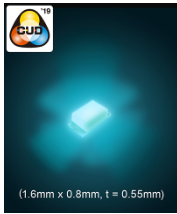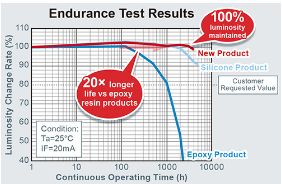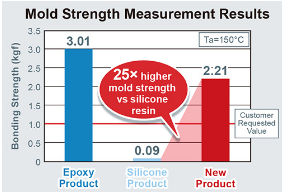- Abracon
- Adam Tech
- Aerospace, Defense & Marine
- Agastat
- AIC
- AKM Semiconductor
- Alcoswitch
- Allegro
- Alps Electric
- Altera
- AMI Semiconductor
- AMP
- ams
- Analog Devices (ADI)
- Aptina Imaging
- Atmel
- Avago / Broadcom
- AVX
- Axicom
- Bccomponents
- Beyschlag
- BI Technologies
- Bourns Inc.
- Bowei Integrated Circuits
- Bridgelux
- Buchanan
- California Micro Devices
- Catalyst Semiconductor
- CGS
- Cirrus Logic
- Citizen Electronics
- CML Microcircuits
- Coiltronics
- Cooper Bussmann
- Corcom
- Core Logic
- Cree
- CSR PLC
- CTS
- Cypress Semiconductor
- Dale
- Data Image
- Deutsch
- Diodes Incorporated
- DOMINANT Opto Technologies
- E-T-A
- Eaton
- ECS
- Edison Opto
- Elcon
- EPCOS
- Epistar
- Epson
- Everlight Electronics
- Exar
- Fairchild Semiconductor
- FCI
- Freescale Semiconductor
- Fremont Micro Devices (FMD)
- Fujitsu Semiconductor
- Fulltech Electric
- General Semiconductor
- Harvatek
- Holsworthy
- Hsuan Mao Technology
- IDT
- Infineon Technologies
- Innolux
- International Rectifier (IR)
- Intersil
- IRC
- ISSI
- IXYS-IC
- Jing Cheng Electronical
- JL World
- Johanson Dielectrics
- Johanson Technology
- JRC / NJR
- JST
- KEC
- Kilovac
- Kingbright
- Kyocera Industrial Ceramics
- LEDiL
- Linear Technology / ADI
- Lite-On Technology
- Littelfuse
- Lumex
- Lumileds
- Luminary Micro
- Luminus Devices
- Macronix
- Maojwei / ZJPT
- Maxim Integrated
- MCC
- Mean Well Enterprises
- Microchip Technology
- Micron
- Microsemi
- Mini-Circuits
- Molex
- Murata Manufacturing
- Murata Power Solutions
- MWT
- National Semiconductor
- Nichicon
- Nippon Chemi-Con
- NJR / JRC
- NVE
- NXP Semiconductors
- OEG
- Omnivision
- ON Semiconductor
- Optek Technology
- Optrex
- OSRAM Opto Semiconductors
- OTAX
- Panasonic
- Peregrine(pSemi)
- Potter & Brumfield
- Power Integrations
- PowerStor
- Preci-Dip
- Prewell
- Products Unlimited
- Pulse Electronics
- PulseCore Semiconductor
- Qorvo
- Raychem
- Renesas Electronics
- RFMD
- Richtek Technology
- ROHM Semiconductor
- Rubycon
- Samsung Electro-Mechanics
- Samsung Semiconductor
- Schaffner
- Schrack
- Seiko Instruments, Inc. (SII)
- Semtech
- Sensata
- Seoul Semiconductor
- Sfernice
- Sharp Display
- Sharp Microelectronics
- Silicon Labs
- Siliconix
- Skyworks Solutions
- SoniCrest / JL World
- Spansion
- Sprague
- Stanley Electric
- STMicroelectronics
- Sunny Electronics
- Susumu (SSM)
- Taimag
- Taiyo Yuden
- TDK
- TDK-Lambda
- TE Connectivity
- Teccor
- Texas Instruments (TI)
- Thin Film
- Tianma Micro-electronics
- TOCOS
- TOKO
- Toshiba Electronic Components
- TT Electronics
- Tusonix
- TXC
- Tyntek
- Vishay
- Vishay Precision Group
- Vitramon
- Walsin Technology
- Weidmuller
- Welwyn
- Wickmann
- Winbond
- Xilinx
- Yageo
- Zetex Semiconductors
- ZJPT / Maojwei
뉴스
Blue-Green Chip LEDs Ideal for Color Universal Design Applications
2020-07-15 | 반환 ROHM recently announced the1608-size high accuracy blue-green chip LEDs, SMLD12E2N1W and SMLD12E3N1W. These products support the adoption of Color Universal Design (CUD) in a variety of applications, such as fire alarm system indicator lights, industrial equipment warning lamps and public transportation information displays.
ROHM recently announced the1608-size high accuracy blue-green chip LEDs, SMLD12E2N1W and SMLD12E3N1W. These products support the adoption of Color Universal Design (CUD) in a variety of applications, such as fire alarm system indicator lights, industrial equipment warning lamps and public transportation information displays.Color is considered to be one of the most important means of communication and as such is used in a variety of ways – daily. However, approximately over 200 million people with P-type and D-type color deficiencies around the world find it difficult to distinguish between red and green, possibly resulting in information being inaccurately conveyed – depending on the combination of colors used. Furthermore, since color vision can vary from person to person, it is difficult to perceive how different people see certain colors, which can be very inconvenient and also problematic as other people may not notice this deficiency.
As a result, there is a growing need in the society to implement Color Universal Design that takes into account the various types of color vision in order to deliver information accurately to as many people as possible. ROHM succeeded in developing blue-green chip LEDs with special wavelengths. These products are ideal for implementing Color Universal Design in a wide range of devices, utilizing a vertically integrated production system from the element fabrication stage and leveraging ROHM’s strength thorough quality control.
The SMLD12E2N1W and SMLD12E3N1W are the first* 1608 size LEDs to be certified by the Japanese NPO (Non-Profit Organization), Color Universal Design Organization (hereafter referred to as CUDO) – making it possible to achieve color schemes and designs that can be easily discernible by everyone, including those who cannot distinguish differences in color.
*Based on ROHM’s investigation as of June, 2020.
In addition, adopting a new resin allows ROHM to significantly extend the LED lifetime while reducing the degradation of light intensity compared to conventional epoxy resins and improving the mold strength compared to the silicone resins while providing superior reliability. ROHM also offers AEC-Q102 qualified products that ensure worry-free use in automotive systems and industrial equipment demanding extreme reliability.
ROHM will continue to strengthen its lineup by developing high reliability LEDs that deliver greater convenience and safety.

Key Features
ROHM’s special wavelength blue-green LEDs – ideal for color universal design applications
While there are a variety of devices that transmit information using red and green colors, adopting blue-green and orange or yellow will make it easier for people with P-type or D-type color deficiency and difficulty to distinguish red and green colors. As such, the color scheme is important for conveying information using LEDs.
Now, by acquiring Color Universal Design certification for ROHM’s SMLD12E2N1W and SMLD12E3N1W blue-green LEDs, it is possible for people with various types of color vision and sensitivities to accurately identify color patterns that include the use of ROHM’s blue LED (SMLD12BN1WT86, λD: 470nm) and warm color LEDs (SML-D15YW, λD: 590nm; SML-D15DW, λD: 605nm) – making them ideal for Color Universal Design applications.

Advantages of the SMLD12 Series
Adopts a new resin while ensuring high reliability
The SMLD12 series (SMLD12E2N1W and SMLD12E3N1W) utilizes a new resin that improves on the following issues when using conventional epoxy and silicone resins, allowing worry-free use in devices requiring high reliability.
1) 20x longer life vs. epoxy resin
Luminous intensity is maintained even during endurance testing (25°C, IF=20mA, 1,000hrs), resulting in approx. 20x longer life at the same residual light intensity level vs epoxy resin products.

2) 25x higher mold strength compared to silicone resin
Adopting a new resin material which affects mountability improves mold strength by 25x compared to silicone resin products even at high temperatures (Ta=150°C). This minimizes defects during mounting, achieving superior mountability.

Lineup
Part No. |
Emitting Color |
Dominant (Emission) Wavelength λD [nm] |
Brightness IV [mcd] |
Forward Voltage VF [V] |
Forward Current IF [mA] |
AEC-Q102 |
Package [mm] |
Blue |
470 |
40 |
2.9 |
5 |
*(C) added to P/N |
1.6x0.8 (t=0.55) |
|
Cyan |
496 |
85 |
|||||
Blue Green |
505 |
120 |
|||||
Yellow |
590 |
224 |
2.1 |
20 |
|||
Orange |
605 |
2.0 |
Color Universal Design Application Examples
> Operating panel indicator lights for fire alarm systems, etc.
> Safety warning lamps in industrial equipment
> Information boards for public transportation facilities
> Parking lot occupancy (empty/full) indicator lamps
> Battery charge status indicators
> Display panels for hospital equipment (i.e. nurse calls) and more...
Availability: Now
Pricing: Starting from $0.26/unit (1,000pcs)
Terminology
Color Universal Design
A design system developed in consideration of people with various types of color vision – allowing information to be accurately conveyed to as many individuals as possible
Color Universal Design Organization
Can be abbreviated to CUDO – an NPO established with the aim of creating a ‘color barrier-free society’ by improving the color environment to ensure easy identification even by people with various types of color vision.
P-Type / D-Type Colorblind
CUDO classifies the differences in color vision into the following 5 types.
Designation |
Description |
C-Type (Common) |
A person with normal color vision who has all three types of photoreceptor cone cells: red, green, and blue |
P-Type (Protanopia) |
Strong: No or non-functioning cone cells for detecting red light |
D-Type (Deuteranopia) |
Strong: No or non-functioning cone cells for detecting green light |
T-Type (Tritanopia) |
No cone cells for primarily detecting blue light; functionally weak |
A-Type (Achromatopia) |
Only has one type of cone cell, no cone cells at all, or all cells are weak |
Source:http://www.rohm.com/





